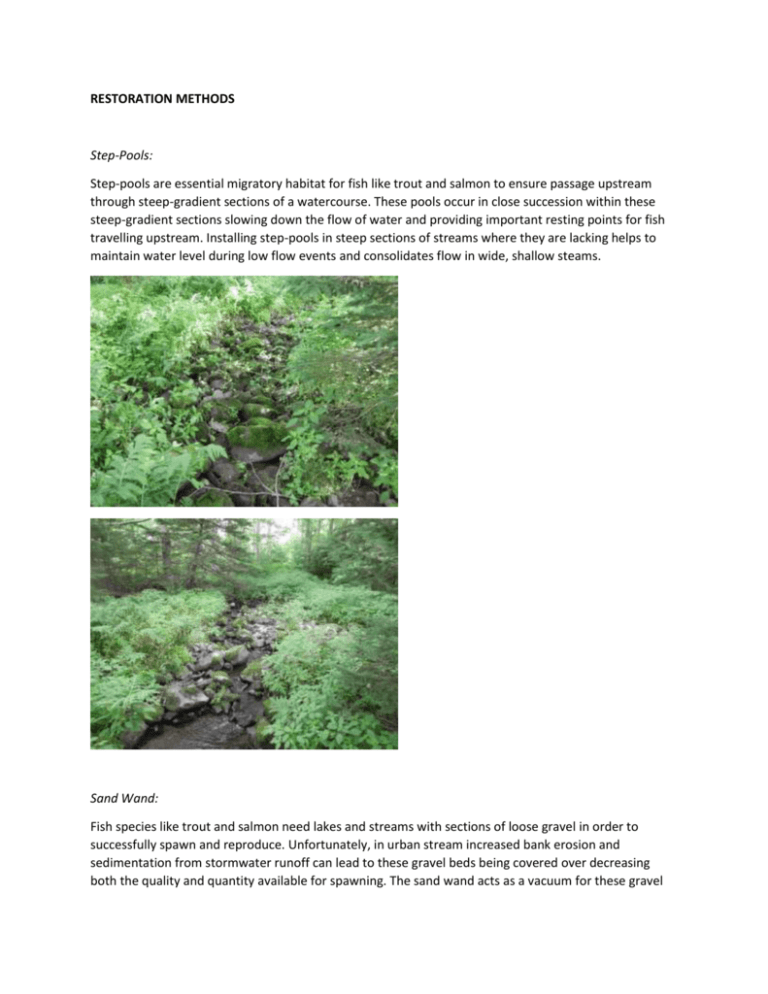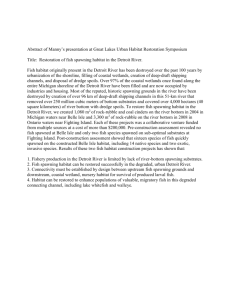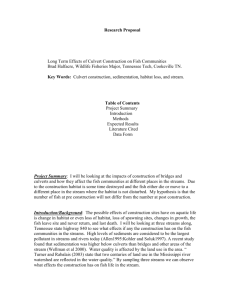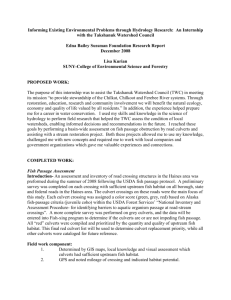methods to restore the streams
advertisement

RESTORATION METHODS Step-Pools: Step-pools are essential migratory habitat for fish like trout and salmon to ensure passage upstream through steep-gradient sections of a watercourse. These pools occur in close succession within these steep-gradient sections slowing down the flow of water and providing important resting points for fish travelling upstream. Installing step-pools in steep sections of streams where they are lacking helps to maintain water level during low flow events and consolidates flow in wide, shallow steams. Sand Wand: Fish species like trout and salmon need lakes and streams with sections of loose gravel in order to successfully spawn and reproduce. Unfortunately, in urban stream increased bank erosion and sedimentation from stormwater runoff can lead to these gravel beds being covered over decreasing both the quality and quantity available for spawning. The sand wand acts as a vacuum for these gravel beds, removing sediment and algal growth while leaving the gravel in place restoring these important spawning habitats. Debris Removal: Over time, woody debris and refuse from different land uses throughout a watershed can build up in streams and develop in to blockages that can affect flow and fish passage. This debris, if not removed, can lead to localized flooding, braiding of the channel, bank erosion, and the degradation of the surrounding fish habitat. Regular removal of this debris allows the stream to maintain its natural features. SURVEY METHODS Electrofishing: Electrofishing is a scientific survey method commonly used to sample stream fish populations to determine the presence and abundance of the species present. This technique uses a pulsating electric current to briefly stun fish so they can be easily caught and identified before being released back into the stream. Fish Habitat Assessments: The Nova Scotia Fish Habitat Assessment Protocol provides a standardized fish habitat assessment methodology specific to Nova Scotia. Fish habitat assessments of streams help determine which are in need of restoration and can help evaluate the effectiveness of restoration projects already completed. Culvert Assessment Surveys: Culvert assessment surveys are used to assess the fish passability of the individual culverts located throughout a given watershed. Good habitat connectivity is essential for healthy fish populations and these surveys identify culverts that are impeding fish passage to potential upstream habitat.











